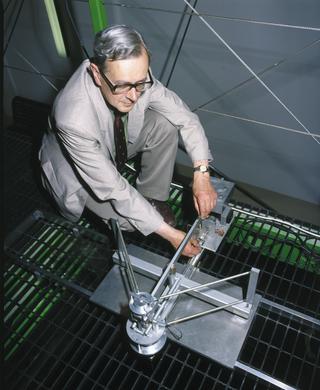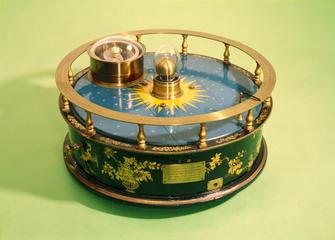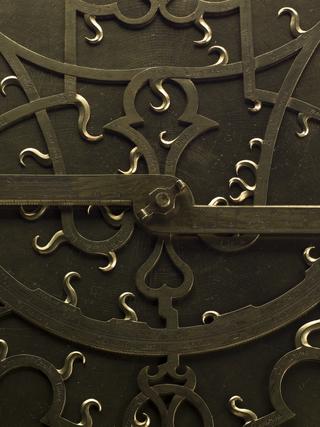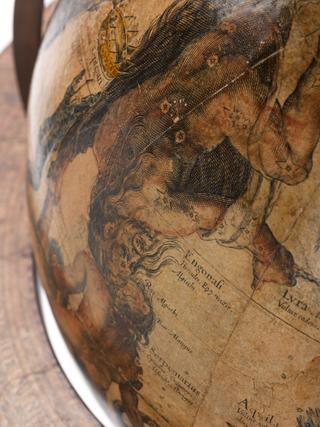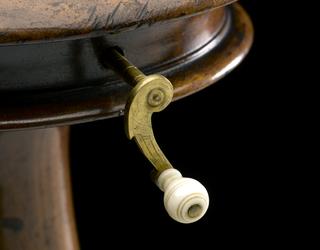










Small brass planispheric astrolabe engraved with Arabic script, thought to be Persian, c. 1650, IC 1056 (international checklist).
This small astrolabe dates from c.1650 and is thought to be Persian in origin. The astrolabe is in essence a model of the universe that an astronomer could hold in their hands. From its origins in the Ancient World, Islamic astronomers developed the astrolabe from where it spread to Europe, becoming popular during the Medieval and Renaissance periods. Its many uses included timekeeping, astrology and surveying. The word 'astrolabe' has been translated variously as "star-taker" and "the one that catches the heavenly bodies".
